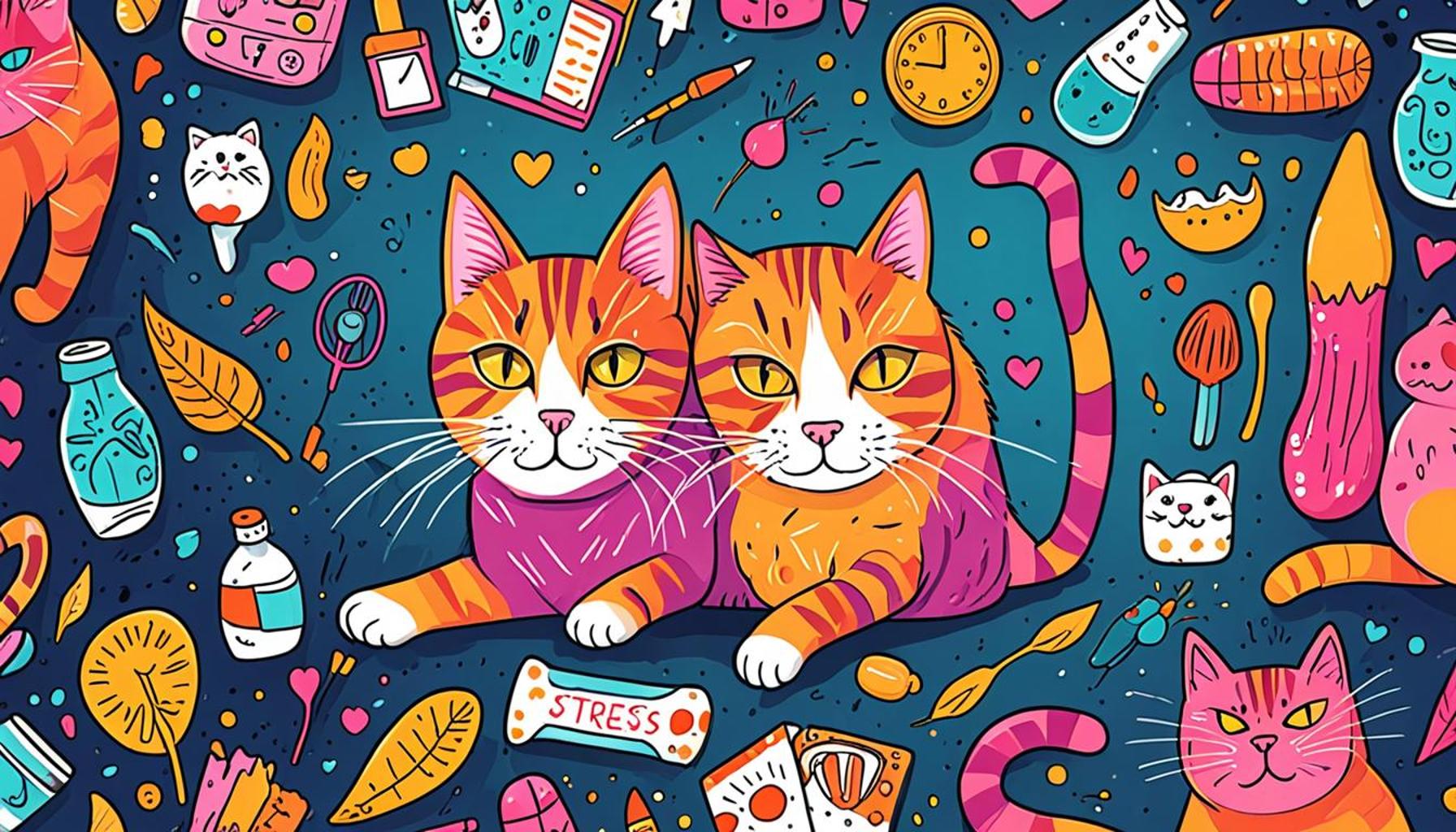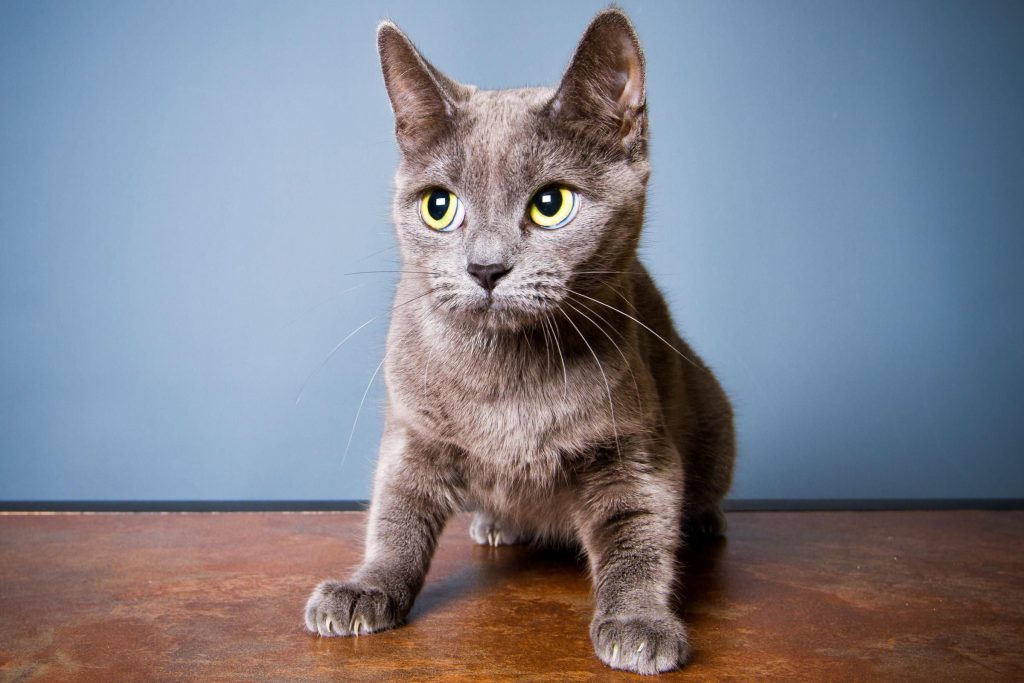How to Identify Stress Signs in Domestic Cats Essential Tips

The Silent Struggles of Our Furry Companions
Domestic cats, despite their independent demeanor, often experience stress that can go unnoticed by their owners. Their natural instinct to hide feelings can make it especially challenging to detect when they are undergoing distress. It’s essential to understand that if stress is left unaddressed, it can lead to significant behavioral changes and serious health complications. Learning to recognize the signs of stress in your feline friend is crucial not only for their emotional well-being but also for fostering a healthy bond between you and your pet.
Common Stress Indicators
Cats exhibit a variety of behaviors that may serve as indicators of underlying stress. Observing these signs can aid in providing timely intervention, promoting a calmer living environment. Here are some common signs to watch for:
- Changes in Appetite: If your cat suddenly begins eating significantly less or overeats, it could suggest they are experiencing stress. For instance, a cat that normally enjoys their kibble may show disinterest during mealtime when anxious.
- Hiding: Cats often seek refuge in secluded areas when feeling overwhelmed. If you notice your cat retreating to cabinets or underneath furniture more frequently, it may be their way of coping with stress.
- Excessive Grooming: Over-grooming can lead to hair loss and skin irritations. Cats may lick themselves obsessively when under stress, resulting in bald patches or painful skin conditions.
- Vocalization: An increase in meowing, yowling, or other vocal disturbances can signal discomfort. If your usually quiet cat starts a vocal spree, this change might indicate feelings of anxiety.
- Aggression: Uncharacteristic aggressive behavior can often be a response to fear or stress-induced anxiety. For example, a cat that typically enjoys gentle play might suddenly lash out when threatened.
Understanding these signs is only part of the equation; it’s equally important to pinpoint the underlying causes of stress in your cat. Numerous factors can contribute to their anxiety.
- New Environments: Cats are creatures of habit, and the introduction of a new home, or the arrival of another pet, can create a significant upheaval in their world.
- Changes in Routine: Deviations from their usual feeding or playing schedules can disrupt a cat’s sense of security, resulting in stress. This is particularly relevant for cats that thrive on routine.
- Health Issues: Persistent pain or unaddressed medical issues can exacerbate anxiety in cats. Regular veterinary check-ups can help identify any potential health problems before they escalate.
By becoming familiar with these indicators and their causes, you transform into a proactive participant in your cat’s health journey. An understanding of your cat’s emotional state not only enriches your relationship with them but also contributes to a harmonious living environment. Engaging with your pet through gentle observation and timely interventions can lead to a happier, more balanced life for both you and your furry companion. As a responsible owner, it’s essential to advocate for your pet’s mental well-being just as you would for their physical health.

CHECK OUT: Click here to explore more
Recognizing Stress: The First Step Towards Relief
Understanding the signs of stress in domestic cats is crucial for ensuring their emotional and physical well-being. Many pet owners may not realize that cats communicate their distress through subtle behavioral changes. Thus, recognizing these indicators can make a significant difference in their quality of life. Stress in cats is often misunderstood, leading to misguided attempts to correct undesirable behavior without addressing the root cause of their anxiety. Here are some essential tips for identifying signs of stress and fostering a more comfortable environment for your feline friend.
Behavioral Changes to Observe
Behavior is the primary language through which cats express their inner feelings. It’s essential to remain attentive to changes in their usual habits. Behavioral indicators can vary significantly among individual cats, but some common stress-related behaviors include:
- Increased Hiding: While many cats enjoy a cozy hideaway, excessive hiding can signal stress or discomfort. This change in behavior often indicates that your cat feels threatened or overwhelmed.
- Changes in Litter Box Habits: If your feline suddenly stops using their litter box or starts eliminating outside of it, this can be a clear sign of stress. Such changes often stem from practical issues like an unclean box or emotional factors like anxiety.
- Altered Grooming Patterns: Pay attention to how much time your cat spends grooming. A sudden increase may indicate stress, as cats may clean themselves to self-soothe. Conversely, a cat that stops grooming may be experiencing severe anxiety that can lead to hygiene issues.
- Destructive Behavior: If your cat starts scratching furniture or knocking things over, this behavior could be a release of pent-up stress or anxiety. Recognizing this as a cry for help is essential.
- Fleeting Affection: A normally affectionate cat that begins to withdraw from social interactions may be indicating distress. Cats may seek solitude when feeling anxious and may need time to return to their usual affectionate selves.
Identifying behavioral changes is important, but recognizing the stimuli that trigger stress is equally vital. Several factors in your cat’s environment can contribute to their anxious state:
- Environmental Changes: Be mindful of renovations, new furniture, or any unfamiliar scents that might unsettle your cat’s routine. Cats flourish in stable environments, so any alterations may provoke anxiety.
- Family Dynamics: The arrival of new family members, either human or animal, can cause disturbances in a cat’s familiar territory, leading to stress. Understanding your cat’s personality can help ease their transition into new situations.
- Seasonal Changes: Changes in weather or seasonal events, such as fireworks or loud festivities, can affect your cat’s peace. Some cats may benefit from designated safe spaces that allow them to retreat during stressful times.
By gaining insight into your cat’s behavior and the potential triggers of stress, you empower yourself to take meaningful steps towards creating a serene environment. The journey to understanding your feline friend’s emotional state not only enhances their quality of life but also reaffirms the bond you share. Once you’re attuned to their needs, you can work together to navigate the challenges of stress, ensuring a happier and healthier home for both of you.
Recognizing Behavioral Changes
When discussing how to identify stress signs in domestic cats, one of the first areas to observe is behavioral changes. Cats are creatures of habit, and even slight modifications in their routine can indicate they are experiencing stress. Be attentive to alterations in behavior such as excessive hiding, changes in grooming habits, or unusual aggression. These signs may serve as critical indicators of underlying tension, prompting a closer examination of their environment and interactions.
Physical Symptoms to Monitor
In addition to behavioral shifts, a cat’s physical health can also reflect their stress levels. Look for signs such as loss of appetite, sudden weight changes, or excessive vocalization. Each of these can signal discomfort or anxiety. Additionally, pay attention to litter box behaviors; a cat that is suddenly urinating outside the box might be showing signs of stress or frustration. Keeping a detailed log of these changes can assist you in identifying patterns that warrant further investigation.
Environmental Factors
Your cat’s surroundings play a significant role in their well-being. Factors such as loud noises, new pets, or changes in family dynamics can contribute to feelings of insecurity. Providing a safe space, such as a quiet room or cozy bed, allows them to retreat and regain their composure when stressed. Moreover, maintaining a consistent atmosphere in your home can help minimize anxiety triggers, making it essential to evaluate any recent changes in their environment.
Communication and Socialization
Cats are known for their complex communication methods. If your cat becomes less social or actively avoids interaction, this could be indicative of stress. Engaging with your cat through gentle play or soft talking can help you gauge their comfort level and willingness to socialize. Recognizing when your cat is in a state of distress can make a huge difference in how you support them during challenging times.
| Stress Signs | Indicators |
|---|---|
| Behavioral Changes | Hiding, aggression, or withdrawal from family |
| Physical Symptoms | Loss of appetite, vocalization, litter box issues |
Understanding these signs is crucial for ensuring the mental and physical health of your feline friends. By implementing observant care, you can effectively respond to and alleviate the stress that domestic cats may face.
SEE ALSO: Click here to read another article
Physical Signs of Stress: Beyond Behavior
While behavioral changes in cats often serve as the most evident indicators of stress, physical signs should not be overlooked. By observing your cat’s physical condition, you can gain a more holistic understanding of their emotional state. Just like humans, cats may manifest their distress through various physiological reactions that can provide essential clues to their well-being.
Key Physical Indicators
When assessing your feline’s stress levels, pay close attention to the following physical signs:
- Panting or Rapid Breathing: Normally, cats maintain a steady, calm breathing pattern. If you notice your cat panting or exhibiting unusually rapid breaths, it may indicate a high level of stress or panic. This can occur especially in reaction to loud noises or sudden changes in their environment.
- Excessive Shedding or Fur Loss: Cats may react to chronic stress with increased shedding. Clumps of fur around the house can be a sign that your cat is distressed. In more severe cases, stress can lead to bald patches, particularly around the face or tail.
- Altered Eating Habits: Changes in appetite can be a significant physical sign of stress. Some cats may stop eating entirely due to anxiety, while others may overeat as a coping mechanism. Monitoring your cat’s food intake can offer insight into their mental state.
- Tense Body Posture: A cat’s body language speaks volumes. Look for signs of tension, such as a stiff tail, flattened ears, or an arched back. These physical postures usually indicate discomfort and anxiety.
- Vocal Changes: If your cat begins to vocalize more frequently, or if their vocalizations change in pitch or intensity, this might suggest that they are under stress. A cat that usually meows softly but suddenly becomes loud or aggressive with its sounds could be feeling threatened or anxious.
Environmental Factors Impacting Physical Stress
Identifying the physical signs of stress can help lead to identifying potential triggers in your cat’s environment. Various factors may contribute to your cat’s stress, including:
- Poor Indoor Air Quality: Exposure to smoke, strong perfumes, or household cleaners can affect your cat’s respiratory health and lead to stress. Monitoring air quality and using pet-safe cleaning products can create a more comfortable atmosphere.
- Inadequate Space: Cats require personal space to feel secure. If your living space is cramped or filled with clutter, it can lead to stress. Providing vertical spaces, such as cat trees and shelves, can help your feline feel more secure and in control of their environment.
- Overstimulation: Exposure to loud noises, such as construction, yelling, or electronic devices, can lead to sensory overload in sensitive cats. Designating a quiet area within the home for your cat to retreat can help alleviate overwhelming stimulus.
Being proactive about understanding the physical signs of stress your cat may express is key to fostering an environment that promotes peace and stability. Regularly monitoring your feline companion’s health not only helps in identifying stress but also empowers pet owners to take appropriate actions toward enhancing their cat’s overall well-being. With awareness and attention to detail, you can create a living space that supports your cat’s emotional needs, ultimately enriching the bond you share with your furry friend.
SEE ALSO: Click here to read another article
Conclusion: Enhancing Your Cat’s Well-Being
Identifying stress signs in domestic cats is crucial for ensuring their health and happiness. By understanding both behavioral changes and physical indicators, cat owners can more effectively gauge their feline friends’ emotional states. From altered eating habits to excessive shedding and signs of tension, recognizing these stress signals is vital for proactive care. What’s more, the environment plays an integral role in your cat’s well-being; addressing factors like poor air quality, inadequate space, and overstimulation can significantly reduce stress levels.
As guardians of our furry companions, it is our responsibility to foster a supportive and secure living space that caters to their needs. By regularly monitoring your cat’s behavior and physical condition, you can take informed actions that contribute to their overall well-being. Consider creating designated safe zones within your home, investing in enrichment activities, and ensuring their surroundings are as stress-free as possible.
Ultimately, developing an awareness of stress signs in your cat not only leads to better health outcomes but also strengthens the bond you share. A harmonious relationship stems from understanding, compassion, and a keen observation of your pet’s needs. As you embark on this journey of discovery, remember that your efforts will pay off, enriching both your life and that of your beloved feline. For more insights and guidance, keep researching on pet care and well-being, ensuring your home is a haven for your cherished companion.



